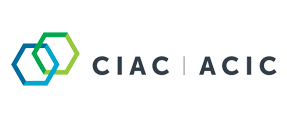CIAC submits recommendations to Transport Canada on training in the transportation of dangerous goods
April 06, 2017
The Chemistry Industry Association of Canada has submitted recommendations to Transport Canada in response to their discussion paper: Training in the Transportation of Dangerous Goods: A White Paper. The paper seeks to improve public safety by strengthening training requirements and aims to give inspectors tools needed to ensure compliance.
The paper suggests adopting competency-based training and assessment approach (CBTA). For competency-based training to be supported by CIAC it must not be overly prescriptive or job specific, and the employer would remain responsible for determining competency.
CIAC does not support an exclusively CBTA approach, like the one used by the International Civil Aviation Organization. The chemistry industry features diverse job functions, a variety of dangerous goods in transit, several methods of containment, and multiple modes of transportation. Developing a CBTA framework for each role would be complex, time-intensive, and lead to conflicts with other international regulations.
Furthermore, it is stressed that any competency based training framework identifying performance expectations be linked to a person’s job functions. Of key importance is ensuring any assessment of an individual’s competency by an inspector consists of clear and known expectations, is fact-based, and is assessed consistently among inspectors.
Transport Canada also proposed s creating a “Transportation of Dangerous Goods 101 Test” to help with training. While CIAC is not opposed to the test being one option, several of the potential test topics were thought to be too detailed for a 101-level evaluation. The test should be relevant to employees regardless of their specific job tasks, which could be limited to loading tank cars or creating shipping documents.
CIAC and its members will continue working closely with Transport Canada to provide industry input on training programs that currently exist and work collaboratively to explore the potential of addressing gap areas before establishing a new training regime.
You can read CIAC’s submission http://www.canadianchemistry.ca/library/uploads/TDG_Training_White_Paper_Submission_-2017-02-28_FINAL.PDF





